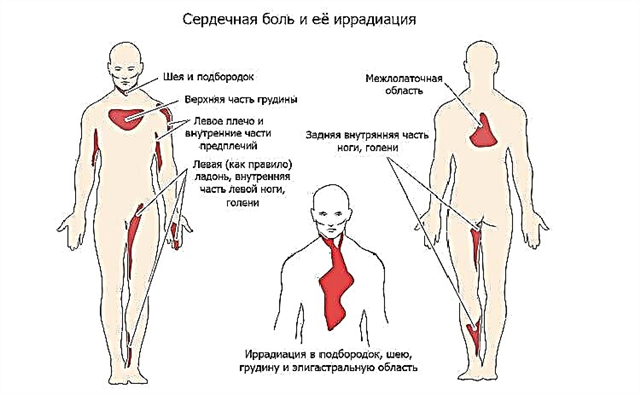Every person can detect blood crusts in the nose. They can form during an exacerbation of colds. In this case, the violation goes away by itself when the root cause is eliminated. However, it often happens that even after a complete cure, crusts in the nose with blood remain, they do not go anywhere even after a thorough morning toilet. In such a situation, you should not hesitate to visit an otolaryngologist who will prescribe the correct treatment.
Causes of crusting
 To highlight specific diseases that lead to the fact that caked blood in the nose turns into crusts, doctors and scientists cannot - this issue has not been fully studied. However, there are a number of factors contributing to the onset of the disorder. Experts agree that the pathology is caused by the malfunctioning of the nervous system, there are also a number of other reasons due to which bloody crusts form in the nose. Let's consider them in more detail.
To highlight specific diseases that lead to the fact that caked blood in the nose turns into crusts, doctors and scientists cannot - this issue has not been fully studied. However, there are a number of factors contributing to the onset of the disorder. Experts agree that the pathology is caused by the malfunctioning of the nervous system, there are also a number of other reasons due to which bloody crusts form in the nose. Let's consider them in more detail.
- Hormonal imbalance. Progesterone medications can cause dry nose and bloody crusts. Hormonal failure almost always leads to disruption of the functioning of the mucous membranes. Women can find dried secretions on the walls of the nose during menstruation, as their body is undergoing severe stress and hormonal changes.
- Prolonged exposure to cold. A sharp change in air temperature causes disruption of the mucous membrane, it can dry out and atrophy, but this is a temporary phenomenon. If it does not go away upon returning to a normal environment, then the cause is more serious.
- Anatomical features. A nose that is too wide can cause blood crusts in the nose. They are formed due to the degeneration of the mucous membrane. Often this phenomenon leads to bone atrophy and is accompanied by the release of pus with an unpleasant odor. It is a serious illness that is difficult to treat.
- Stressful situations. Excessive joy or depression can also lead to a loss of some functional ability of the nasal mucosa. Blood crusts appear on its surface, the treatment of which requires an integrated approach.
- ENT diseases. Long-term or acute ailments that cause constant irritation of the mucous membrane can lead to the fact that it begins to dry out. Due to frequent blowing of the nose and mechanical cleaning, the integrity of the vessels is disturbed, therefore, boggles with blood and crusts appear.
- Disturbance of the trophic functions of the nervous system. If children suffer diseases affecting nervous trophism, and in adulthood they encounter them again, then the mucous membranes can dry out and blood is baked on them.
- Unfavorable environmental conditions. Frequent stay in rooms with insufficient humidity, high dustiness and pollution can lead to a sore nose in a child or an adult. Such conditions negatively affect the work of the mucous membrane, it ceases to secrete a secret, which leads to disturbances.
- Frequent use of the sauna. Hot humid air causes hypersecretion of the mucous membrane in the steam room itself, but when leaving it, a person feels a dried layer of secretions in the nose. Frequent carrying out of such procedures can lead to pathological disorders.
- Common diseases. It is quite rare, but it is possible to find situations when a clot of mucus and blood with pus that forms in the nose is associated with serious autoimmune disorders. It can be diabetes mellitus or Sjogren's syndrome, when the endocrine glands are affected.
Symptoms of the violation
 A person can most often find crusts in his nose in the morning. The bloody nature of the clots suggests that the work of the nasal capillaries is disrupted. This causes certain inconveniences and discomfort, there is dryness and itching in the nasal cavity, tightness, burning.
A person can most often find crusts in his nose in the morning. The bloody nature of the clots suggests that the work of the nasal capillaries is disrupted. This causes certain inconveniences and discomfort, there is dryness and itching in the nasal cavity, tightness, burning.
At night, you can hear a characteristic sound when inhaling and exhaling air, as the mucous membrane becomes dry. Due to the fact that the respiratory function of the nose is disturbed, dryness is constantly felt in the mouth, headaches appear. The sense of smell may partially or completely disappear. The lost gift of perceiving aromas can be restored after removing the crusts.
It is worth noting that it is not worth removing the caked layer of blood and mucus; crusts will reappear in its place.
Mechanical cleaning can only aggravate the situation. Since the capillaries are already malfunctioning, scraping even a small area of dried nasal contents can cause sudden bleeding.
How to deal with a violation?
Most often, doctors prescribe drugs to patients that maintain normal moisture in the nose and prevent blood from baking. Treatment is carried out at home, according to forecasts, after 1-2 weeks all unpleasant symptoms go away.
However, this happens provided that the therapy is aimed at eliminating not only the crusts, but also the diseases that provoked their appearance. Only in the most severe cases do they resort to prompt removal of dead cells. Consider how you can get rid of the disease at home:
- Normalization of the drinking regime. If there are no contraindications, then a day you need to drink at least 2 liters of liquid, it can be healing decoctions, infusions, teas, compotes or mineral water. The liquid helps to normalize the functioning of the mucous membranes.
 Cancellation of vasoconstrictor drugs. Means of this type lead to dependence and disruption of the nasal mucosa; they need to be replaced with saline solutions or acupressure.
Cancellation of vasoconstrictor drugs. Means of this type lead to dependence and disruption of the nasal mucosa; they need to be replaced with saline solutions or acupressure.- Treatment of the cause of the disorder. Therapy must necessarily be aimed at eliminating the ailment that led to the appearance of bloody crusts. Infectious and systemic disorders are treated according to the schemes prescribed by the doctor.
- Saline rinsing. This will help to gently cleanse the mucous membrane and disinfect it. The procedures are carried out 3-4 times a day.
- Inhalation. If the reason for the appearance of crusts is a bacterial infection, then inhalation of drugs such as Doxidin, Miramistin, Chlorophyllipt through an inhaler or nebulizer will give a good effect. They are carried out no more than 2 times a day.
- The use of ointments and balms. Depending on the etiology of the disease, the doctor may prescribe you "Methyluracil ointment", "Levomekol" (antibacterial), "Rescuer", "Fleming" (wound healing and moisturizing), "Viferon", "Oxolinic ointment" (antiviral). It is necessary to put turundas with ointment in the nose after rinsing.
- Moisturizing with oil. Grape or peach seed oil helps with insufficient moisture in the mucous membrane. It must be carefully instilled near the nasal passage so that the liquid does not enter the bronchi, or turundas are moistened in it, which are placed in the nostrils for 10 minutes.
Prevention of crusts
 The appearance of purulent and bloody crusts is easier to avoid than to treat. If a person knows that he is predisposed to this violation, he cannot ignore preventive measures. Let's consider them in more detail:
The appearance of purulent and bloody crusts is easier to avoid than to treat. If a person knows that he is predisposed to this violation, he cannot ignore preventive measures. Let's consider them in more detail:
- sufficient humidification of the air in the house, for this you can use a household humidifier;
- work at hazardous enterprises only in protective equipment (mask, respirator, etc.);
- timely and effective treatment of ENT diseases;
- regular ventilation of the home;
- regular wet cleaning;
- prevention of hypothermia;
- adequate use of vasoconstrictor drugs.
In conclusion
Crusts in the nose can form for a variety of reasons.The presence of an admixture of pus, blood and an unpleasant odor in them indicates a disruption in the functioning of the mucous membranes.
It is possible to eliminate this pathology without surgery, the main thing is to correctly determine which disease led to its appearance. To do this, you need to contact an otolaryngologist in time and follow all his recommendations until complete recovery.

 Cancellation of vasoconstrictor drugs. Means of this type lead to dependence and disruption of the nasal mucosa; they need to be replaced with saline solutions or acupressure.
Cancellation of vasoconstrictor drugs. Means of this type lead to dependence and disruption of the nasal mucosa; they need to be replaced with saline solutions or acupressure.

